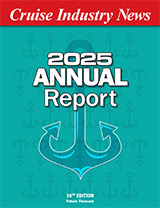The U.S. Environmental Protection Agency has released an interim guidance for shipowners clarifying how the U.S. government will implement fuel availability provisions if ships are unable to obtain compliant fuel to meet the upcoming ECA standards.
The requirements are that ships must use ECA compliant fuel oil when operating within the designated North American ECA, or to install and use an equivalent method as approved and allowed under MARPOL Annex VI Regulation 4, and 40 C.F.R. § 1043.55 (e.g., exhaust gas cleaning device).
The guidance provides background information on the North American ECA fuel sulfur standards, explains how owners and operators of vessels can establish compliance with these requirements, and describes how an owner or operator of a vessel who cannot obtain compliant fuel oil can make a fuel oil non-availability claim.
The North American ECA will come into force on August 1, 2012. At that time, the maximum sulfur content of fuel oil used by ships in the ECA will be limited to 1.00 percent m/m (10,000 ppm). This standard will change on January 1, 2015, to 0.10 percent m/m (1,000 ppm).
Compliant fuel oil is expected to be available from fuel oil suppliers that serve vessels that will operate in the North American ECA. However, if a ship owner or operator is unable to obtain compliant fuel oil, the United States government will implement certain fuel oil availability provisions.
Cruise lines and ships over 400 tons are will be required to maintain and, if requested, make available to the United States government: Bunker delivery notes. Fuel oil samples taken at the time of delivery. Written fuel oil changeover procedures, which show how and when the fuel oil changeover is to be done to ensure that only compliant fuel oil is burned within a designated ECA. The fuel oil changeover logbook that contains the volume of compliant fuel in each tank as well as the date, time, and position of the ship when any fuel oil changeover operation is completed prior to entry into or commenced after exit of a designated ECA.
These records may be inspected to determine if the fuel oil used onboard the ship while operating in the North American ECA meets the sulfur standard. In addition, the United States government may also verify compliance by any methods available to it including, but not limited to, sampling and analyzing fuel oil from a ship’s fuel oil tanks and lines, and sampling and analyzing air emissions.
The United States government may also require additional information on a case by case basis and may use any credible evidence to determine compliance.
Fuel oil that complies with the 1.00% m/m (10,000 ppm) sulfur standard is expected to be available for ships that plan to operate in the North American ECA just as it has been available for ships operating in the North Sea and Baltic Sulfur Emission Control Areas since July 2010, the EPA said in its guidelines. The law requires the use of compliant fuel oil or equivalent methods when operating within the North American ECA. However, the law also anticipates the possibility that despite the best efforts to obtain compliant fuel oil, ships may be unable to do so, and the United States has the authority to take into account relevant circumstances to determine the appropriate action to take, including not taking control measures.
Best efforts to procure compliant fuel oil include, but are not limited to, investigating alternate sources of fuel oil prior to commencing a voyage or route prior to entering the North American ECA. If, despite the best efforts, a ship is unable to procure compliant fuel oil prior to entering the North American ECA, it must notify the United States and the flag Administration.
In addition, if cruise lines want the United States government to consider their efforts in determining what action the government may take, they should provide information in the form of a Fuel Oil Non-Availability Report that details its efforts to obtain compliant fuel oil. This report should be submitted as soon as they determine, or become aware, that they will be unable to procure and use compliant fuel oil, but no later than 96 hours prior to entering the North American ECA. The United States government will consider this information when it determines what action, if any, it will take when the ship enters the North American ECA using noncompliant fuel oil.
The EPA stated that operators must consider the availability of compliant fuel oil when planning voyages and, if compliant fuel oil is not available where planned, they must attempt to locate alternative sources for such fuel oil. Furthermore, they must attempt to obtain ECA-compliant fuel oil at each port on the intended voyage. The United States government expects a vessel operator to make any adjustments that can be made to fuel oil purchase protocols that would allow the purchase of complaint fuel oil prior to entering the North American ECA. However, they are not required to deviate from their intended voyage in order to purchase compliant fuel oil. Furthermore, the United States government does not consider having to change berth or anchor within a port in order to receive compliant fuel oil to be a deviation. The United States government expects a vessel operator to account for these logistical conditions and/or terminal/port policies when planning bunker delivery during a port call.
Additionally, once ships have entered the North American ECA, the United States government expects that they will take on compliant fuel oil, if available, from a U.S. port-of-call prior to further transit in the North American ECA.
The EPA has clarified that while it expects distillate fuels of various grades to be used as blending agents to produce 1.00% m/m (10,000 ppm) sulfur fuel oil, it does not expect vessels to use a fuel oil with viscosity less than 11 centistokes in order to meet the 1.00% m/m (10,000 ppm) fuel sulfur standard. Therefore, consistent with this clarification, prior to January 1, 2015, when the 0.10% m/m (1,000 ppm) sulfur standard begins, it will not give consideration to the availability of distillate fuel oil, other than as a blending agent, when evaluating the circumstances described in a submitted Fuel Oil Non-Availability Report. Rather, it will only consider the availability of residual and residual fuel oil blends in determining what action, if any, to take.
Notably, the EPA stated that the United States government does not consider the cost of compliant fuel oil to be a valid basis for claiming that operators were unable to purchase 1.00% m/m (10,000 ppm) fuel oil.
More detailed information on the MARPOL Annex VI requirements, including the North American ECA and fuel oil sulfur requirements, is available on the U.S. EPA’s website at http://www.epa.gov/otaq/oceanvessels.htm, or on the United States Coast Guard’s website at http://homeport.uscg.mil, then select Domestic Vessels then Domestic Vessel General, then select MARPOL Annex VI.



